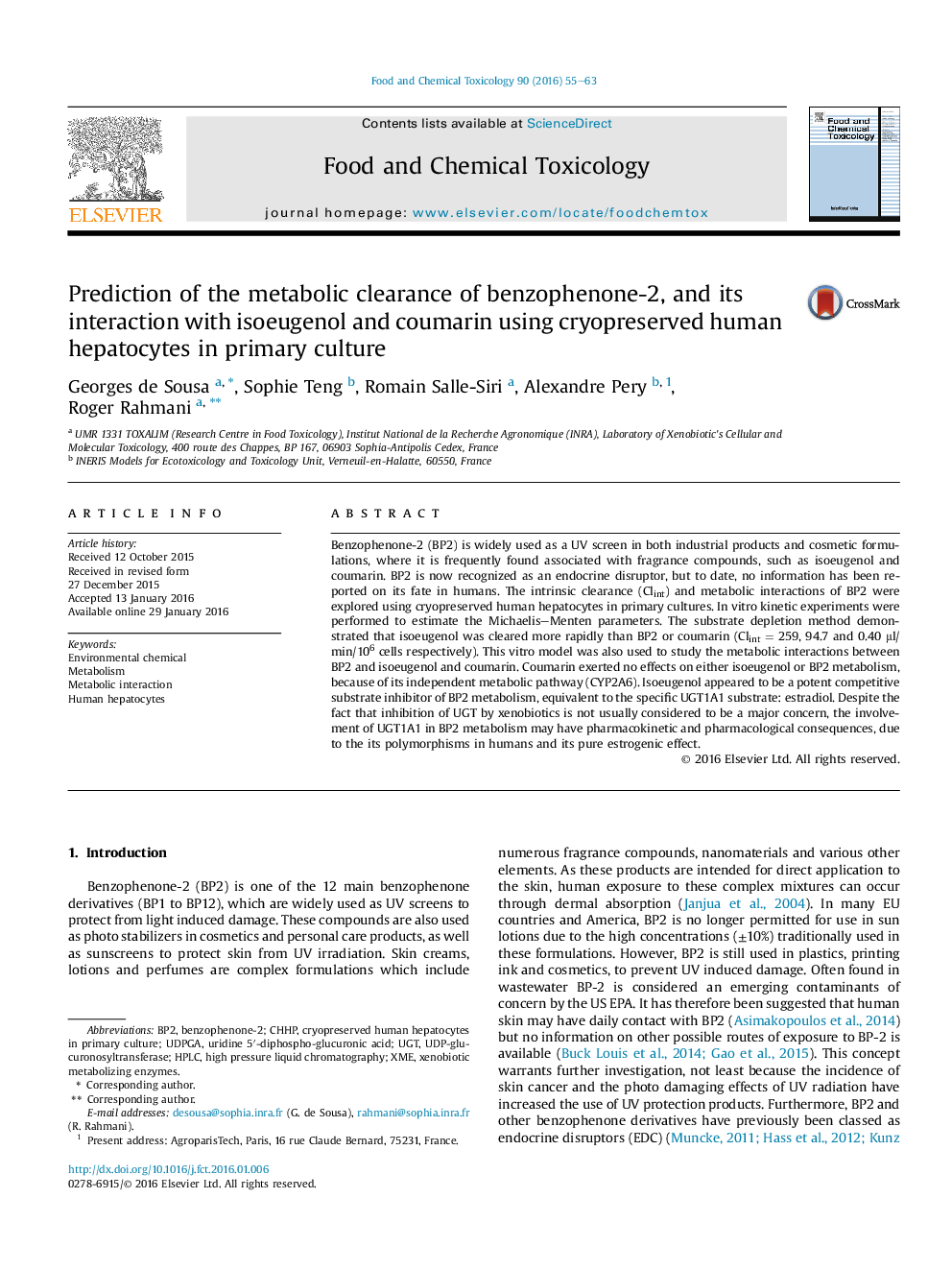| Article ID | Journal | Published Year | Pages | File Type |
|---|---|---|---|---|
| 2584854 | Food and Chemical Toxicology | 2016 | 9 Pages |
•Benzophenone-2 have a pure estrogenic effect and it is used in numerous formulations with fragrances agents.•In contrast to coumarin, benzophenone-2 and isoeugenol are rapidly metabolized in human hepatocytes.•Benzophenone-2 is metabolized by UGT1A1.•Isoeugenol strongly inhibits the metabolisation of benzophenone-2, which could result in slowing down its elimination.
Benzophenone-2 (BP2) is widely used as a UV screen in both industrial products and cosmetic formulations, where it is frequently found associated with fragrance compounds, such as isoeugenol and coumarin. BP2 is now recognized as an endocrine disruptor, but to date, no information has been reported on its fate in humans. The intrinsic clearance (Clint) and metabolic interactions of BP2 were explored using cryopreserved human hepatocytes in primary cultures. In vitro kinetic experiments were performed to estimate the Michaelis–Menten parameters. The substrate depletion method demonstrated that isoeugenol was cleared more rapidly than BP2 or coumarin (Clint = 259, 94.7 and 0.40 μl/min/106 cells respectively). This vitro model was also used to study the metabolic interactions between BP2 and isoeugenol and coumarin. Coumarin exerted no effects on either isoeugenol or BP2 metabolism, because of its independent metabolic pathway (CYP2A6). Isoeugenol appeared to be a potent competitive substrate inhibitor of BP2 metabolism, equivalent to the specific UGT1A1 substrate: estradiol. Despite the fact that inhibition of UGT by xenobiotics is not usually considered to be a major concern, the involvement of UGT1A1 in BP2 metabolism may have pharmacokinetic and pharmacological consequences, due to the its polymorphisms in humans and its pure estrogenic effect.
